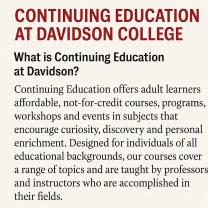How to teach close reading to elementary students?
Teaching close reading to elementary students is an important skill that helps them become better readers and critical thinkers. Close reading involves carefully analyzing a text, understanding its meaning, and drawing inferences. Here are some effective strategies to teach close reading to elementary students:
Choose Appropriate Texts:
- Select texts that are at an appropriate reading level for your students. Choose engaging and thought-provoking texts, such as short stories, poems, or excerpts from books.
Pre-Reading Preparation:
- Before diving into the text, activate prior knowledge by discussing the topic or theme. Encourage students to make predictions about what they might read.
First Read:
- Have students read the text for the first time. Ask them to read silently or aloud, depending on their reading level and preferences.
Annotation and Highlighting:
- Teach students to annotate the text by underlining or highlighting key words or phrases. Encourage them to make notes in the margins about their thoughts, questions, and connections to the text.
Discussion and Questioning:
- After the first read, engage students in a discussion. Encourage them to ask questions about the text. What do they wonder about? What do they find interesting?
Vocabulary:
- Discuss any unfamiliar vocabulary words in the text. Help students understand the meaning of these words in context.
Second Read:
- Have students read the text again. This time, they should pay attention to specific details, such as character actions, dialogue, or descriptive language.
Text Structure and Author's Purpose:
- Discuss the text's structure and the author's purpose. Is it a narrative, informational text, or persuasive? Why did the author write it? What is the main idea?
Inference and Evidence:
- Teach students to make inferences based on the text and provide evidence to support their inferences. Ask questions like, "What do you think will happen next? Why?"
Close Reading Strategies:
- Introduce specific close reading strategies, such as:
- Text-dependent questions: Questions that require students to refer back to the text for answers.
- Comparing and contrasting: Analyzing similarities and differences in the text.
- Cause and effect: Identifying causes and their effects in the text.
- Character analysis: Discussing the characters' motivations and traits.
- Theme exploration: Investigating the central themes in the text.
Group Work:
- Encourage students to discuss the text in small groups. This allows for peer sharing of ideas and promotes critical thinking.
Summarization:
- Have students summarize the text in their own words. This reinforces their understanding of the text.
Writing Responses:
- Ask students to write a response to the text. They can write about their favorite part, what surprised them, or a personal connection they made.
Reflect and Discuss:
- After close reading, have a class discussion about the text. Encourage students to share their thoughts and insights.
Assessment:
- Use assessment tools, such as quizzes or written responses, to gauge students' understanding of the text and close reading concepts.
Regular Practice:
- Close reading is a skill that improves with practice. Incorporate close reading into your curriculum regularly, using a variety of texts.
Teaching close reading to elementary students is a gradual process. Start with simpler texts and gradually introduce more complex ones as students become more proficient. Close reading skills are not only valuable for understanding literature but also for developing critical thinking and analytical skills that will benefit students in all areas of their education.
Teaching Close Reading to Elementary Students: Effective Strategies
Close reading is a process of deeply understanding a text by carefully examining its details and structure. It is an important skill for all students to develop, but it is especially important for elementary students, who are just beginning to develop their reading comprehension skills.
Here are some effective strategies for teaching close reading to elementary students:
- Start with simple texts. Choose texts that are appropriate for your students' reading level and interests.
- Model close reading. Show students how to close read a text by thinking aloud as you read. Point out important details, make inferences, and ask questions.
- Use graphic organizers. Graphic organizers can help students to visualize and organize the information in a text.
- Provide opportunities for discussion. Encourage students to talk about the text with each other and with you. This will help them to deepen their understanding of the text.
- Make it fun! Close reading can be challenging, but it should also be enjoyable. Find ways to make close reading activities engaging and relevant to your students' lives.
Reading Comprehension at the Elementary Level: Close Reading Techniques
Close reading is a powerful tool for improving reading comprehension at the elementary level. Here are some specific close reading techniques that elementary teachers can use:
- Annotate the text. Have students highlight, underline, or circle important details in the text. They can also make notes in the margins or on sticky notes.
- Ask questions. Encourage students to ask questions about the text, both before and after reading. This will help them to focus their attention on the text and to think critically about what they are reading.
- Make inferences. Help students to make inferences about the text by asking them to draw conclusions based on the information that is given.
- Identify the main idea. Help students to identify the main idea of the text by asking them to summarize the text in their own words.
- Analyze the text structure. Help students to analyze the text structure by identifying the different parts of the text and how they are related to each other.
Fostering Critical Reading Skills: Close Reading for Young Learners
Close reading helps to foster critical reading skills in young learners. Critical reading is the ability to think critically about what you are reading and to form your own opinions. It is an important skill for all students to develop, but it is especially important for young learners, who are just beginning to develop their own sense of identity and values.
Here are some ways to foster critical reading skills through close reading:
- Encourage students to question the text. Ask students to think about the author's purpose, the intended audience, and the point of view of the text.
- Help students to identify bias. Help students to identify bias in the text and to think about how it might affect their interpretation of the text.
- Encourage students to make connections. Ask students to make connections between the text and their own lives, other texts they have read, and current events.
- Help students to evaluate the text. Ask students to evaluate the text's accuracy, credibility, and usefulness.
By following these strategies, elementary teachers can help their students to develop the close reading skills they need to be successful readers.












